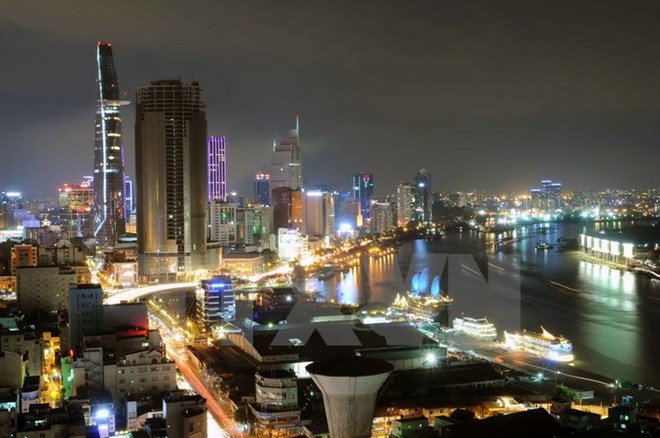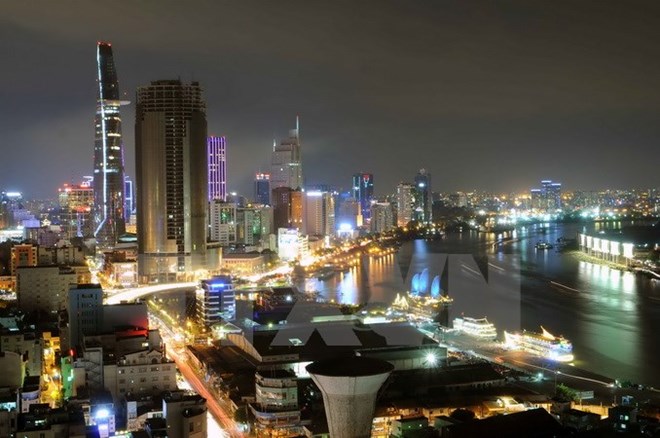
The southern economic hub of Ho Chi Minh City attracted more 4.69 billion USD in foreign direct investment (FDI) in the first seven months of 2018, a year-on-year rise of 70.5 percent.

A corner of Ho Chi Minh City (Photo: VNA)
According to the municipal Department of Planning and Investment,
the city granted new investment licenses to 553 projects worth 508.25 million
USD in the period under review. Besides, it also allowed 148 existing projects
to increase capital by 453.38 million USD, a respective year-on-year increase
of 27.6 percent and 13.3 percent.
Local authorities also approved 1,628 foreign investors to carry out procedures
to contribute capital, purchase shares, and buy back capital of 3.73 billion
USD contributed by domestic enterprises.
The Republic of Korea made up the lion’s share of foreign investment in HMC
City with 30 percent, followed by Singapore (22 percent), Norway (13.8
percent), and Japan (10.4 percent).
Investment was mainly poured into real estate (47.6 percent), science and
technology (19.5 percent), wholesale and retail and repair of automobiles,
motorcycles and other vehicles (8.1 percent), processing and manufacturing
industry (7.7 percent), accommodation and catering services (4.2 percent).
In the January-July period, the city granted establishment licenses to 24,303
new domestic businesses with a total registered capital of 315 trillion VND
(13.4 million USD), an annual rise of 5.8 percent and 6 percent respectively.
Source: VNA
According to data from the Hoa Binh Provincial Party Committee, the industrial production index for the first six months of 2025 is estimated to have increased by 20% compared to the same period last year. This marks the highest year-on-year growth rate for this period since 2020.
In the first six months of 2025, Hoa Binh province’s export turnover was estimated at 1.145 billion USD, marking an 18.11% increase compared to the same period in 2024. Import turnover was estimated at $ 804 million, a 17.15% increase, which helped the province maintain a positive trade balance.
The lives of the ethnic minority farmers in Tan Lac district have gradually improved thanks to the new directions in agricultural production. This is a testament to the collective strength fostered through the professional associations and groups implemented by various levels of the district’s Farmers’ Union.
With the motto the "product quality comes first,” after nearly one year of establishment and operation, Muong village’s Clean Food Agricultural and Commercial Cooperative, located in Cau Hamlet, Hung Son Commune (Kim Boi district), has launched reputable, high-quality agricultural products to the market that are well-received by consumers. The products such as Muong village’s pork sausage, salt-cured chicken, and salt-cured pork hocks have gradually carved out a place in the market and they are on the path to obtaining the OCOP certification.
In the past, the phrase "bumper harvest, rock-bottom prices" was a familiar refrain for Vietnamese farmers engaged in fragmented, small-scale agriculture. But today, a new spirit is emerging across rural areas of Hoa Binh province - one of collaboration, organisation, and collective economic models that provide a stable foundation for production.
Maintaining growing area codes and packing facility codes in accordance with regulations is a mandatory requirement for agricultural products to be eligible for export. Recently, the Department of Agriculture and Environment of Hoa Binh province has intensified technical supervision of designated farming areas and packing facilities to safeguard the "green passport" that enables its products to access international markets.



